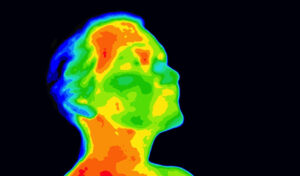
COVID-19 has thrown fresh light on the importance of fever detection devices. Although the most precise equipment to check body temperature continues to remain contact-based, the highly contagious nature of COVID-19 has necessitated the use of contactless technology. Among contactless temperature detection solutions, thermal cameras have come out as the most effective.
But just as pencils can’t solve crosswords by themselves, just purchasing a thermal camera will not solve your problems. First, you should know that there are different kinds of thermal cameras available in the market, and not all of them are suitable for fever detection. The WHO has provided clear guidelines as part of the ISO/TR 13154 and BS EN IEC 80601-2-59, to which any device for human febrile screening must adhere. ISO/TR 13154 provides general guidelines for the deployment, implementation and operation of a screening thermograph intended to be used for non-invasive febrile temperature screening of individuals under indoor environmental conditions to prevent the spread of infection. BS EN IEC80601-2-59 applies to the basic safety and essential performance of screening thermographs intended to be used for the individual non-invasive febrile temperature screening of a human under controlled environmental conditions, hereafter referred to as ME equipment.
The past few months have seen the influx of several technologies that use thermal cameras for fever screening. However, not all of these are safe/accurate as they do not adhere to the above WHO guidelines, and do not address the complex intricacies of thermography.
It is advised to customers to stay clear of solutions that claim to screen multiple persons at once, claim to have a large focus area (anything more than 1.0 meter) depending on the lens configuration, do not measure the temperature at the inner corner of the eye, and claim to provide “absolute” temperature without calibrating for ambient temperature.
Guidelines to follow when temperature screening
But even when you have the right solution selected, there are certain guidelines that you need to follow. A comprehensive list of ISO guidelines is available for this.
The main points are that the person who is scanned should not be wearing glasses because the camera measures temperature from the inner corner of their eye. The reading should be taken from that region of the person’s body (inner corner of the eye), rather than the skin because the skin absorbs radiation differently.
The temperature of the inner corner of the eye has been proven to be closest to the core temperature of the inner body temperature of 37-degree Celcius Compared to the skin, this region absorbs and emits less radiation. Apart from this, the distance from the camera and the person should be minimum. If the person is far away, the reading will not be accurate.
But thermal cameras by themselves are not smart enough to identify the inner corner of the eye across varying demographics of people. You have different genders, ethnicities, environments, and a whole range of heights to consider for automation. This is where artificial intelligence (AI) becomes relevant.
Why AI is necessary for temperature screening
Thermal cameras read whatever it is pointed at. Some companies offer an artificial intelligence solution that would use machine learning algorithms to automatically identify the inner corners of the eye and calculate the temperature.
The AI solution starts with accurate identification of the face, the eyes, and then the inner corners of the eye. AI also helps to automate the process of adhering to the guidelines by informing the person of staying at a proper distance from the camera, removing glasses if any, etc. with a graphical interface, audio, and visual alerts, etc.
Most importantly, a common problem with contactless temperature measuring devices is that the environmental conditions impact the readings. For instance, a person coming into a building on a bright sunny day may show higher body temperature as soon as they enter. In such cases, if the readings are high initially then they must wait for a few minutes and recheck their temperature. An AI-based thermal camera can identify unusually high temperatures while considering the conditions but one must not panic and follow the protocols for rescreening.
Although a combination of AI and thermal cameras is the best option we have now, many customers don’t make use of it, sticking to a manual thermal reading solution. This is mostly because of the high costs involved and a misconception that the security guard who takes the reading is adept at accurately identifying a person with high body temperature. However, fever screening is here to stay and companies are adopting new use cases to combine fever screening and attendance systems as long-term solutions.
Adapted from a&s Magazine



































































